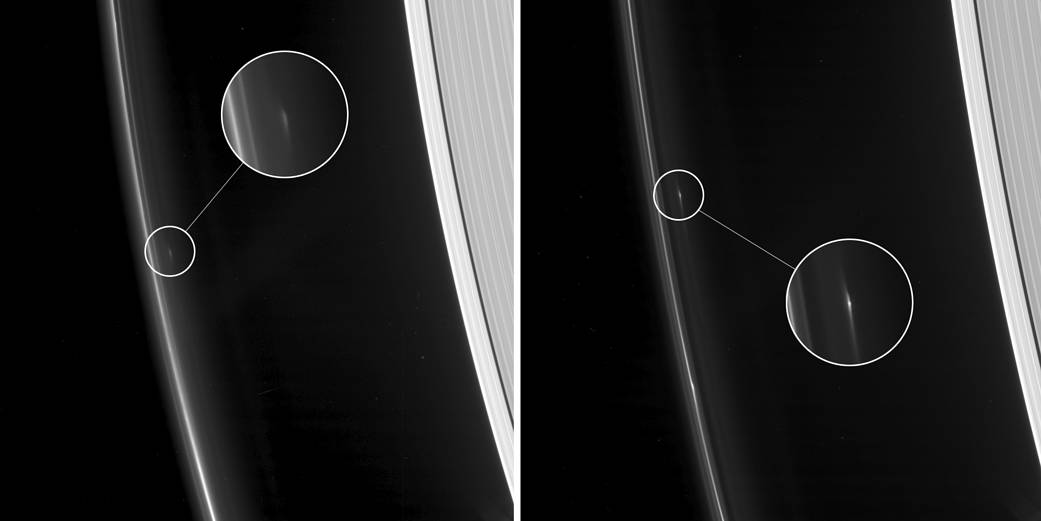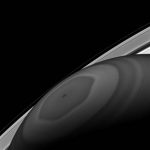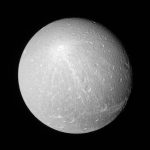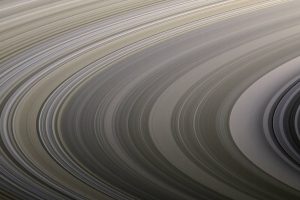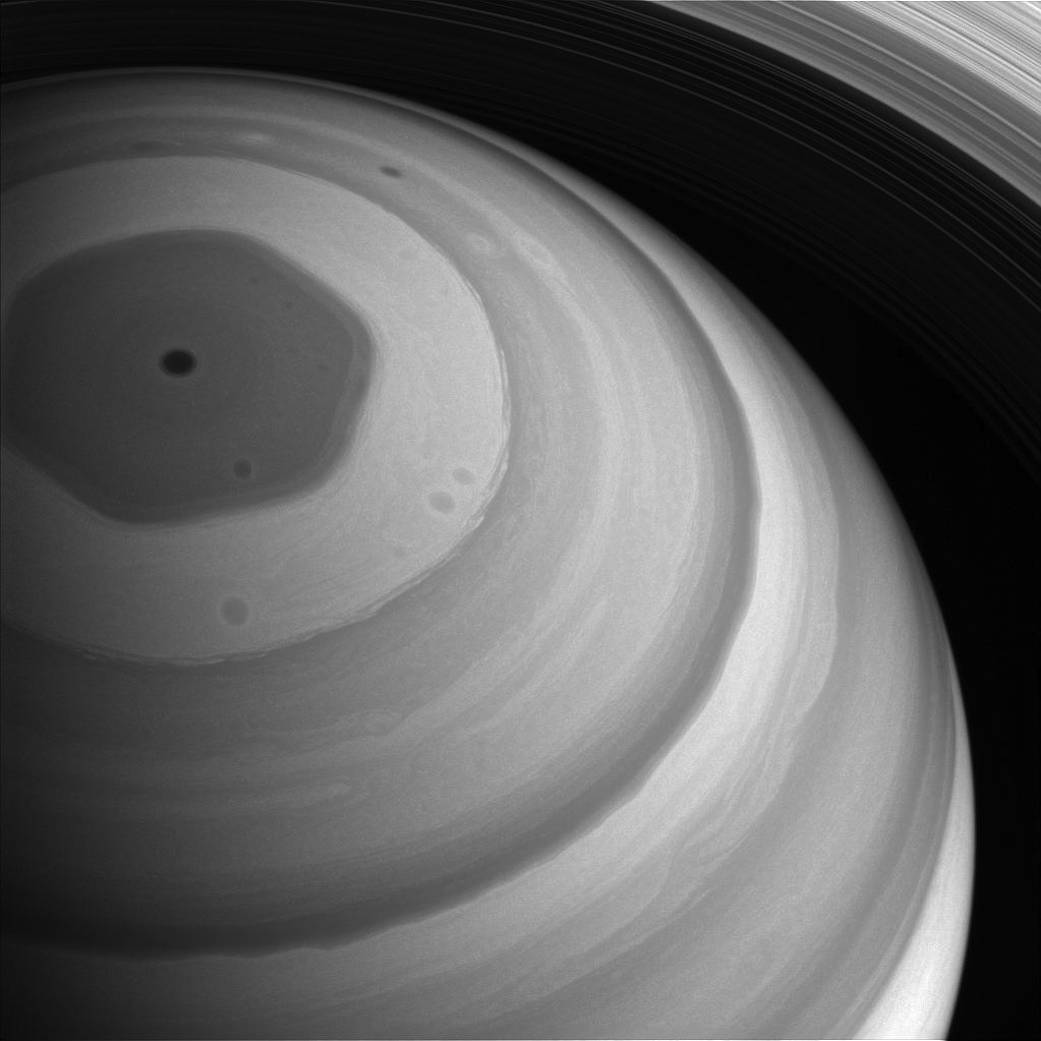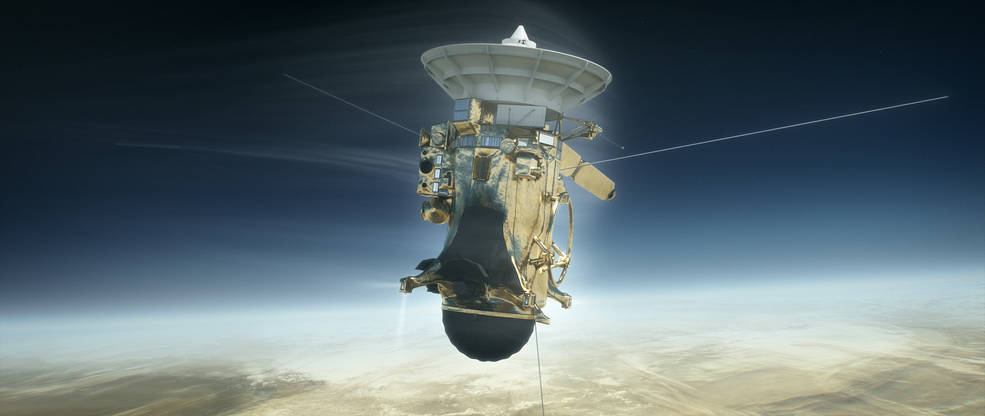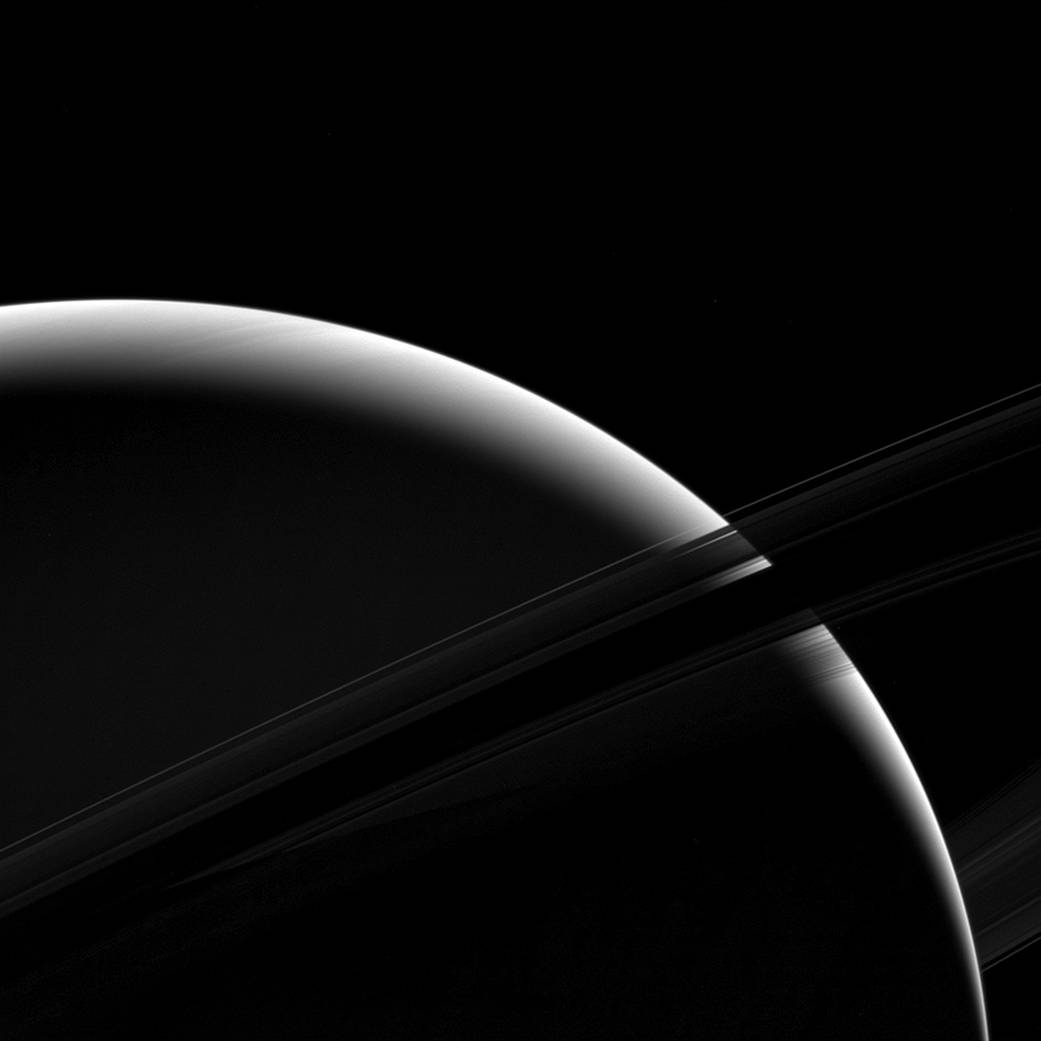オリジナル記事:Hardy Objects in Saturn’s F Ring
As NASA’s Cassini spacecraft continues its weekly ring-grazing orbits, diving just past the outside of Saturn’s F ring, it is tracking several small, persistent objects there.
NASAの土星探査機カッシーニは、土星のF環の外縁を毎週通過する環状軌道を続けているので、そこでいくつかの物体を追跡観測することができます。
These images show two such objects that Cassini originally detected in spring 2016, as the spacecraft transitioned from more equatorial orbits to orbits at increasingly high inclination about the planet’s equator.
これらの画像には、もともとカッシーニが2016年春に発見した2つの物体が捉えられています。その時はカッシーニが土星の赤道軌道から緯度をどんどん高く上げていく際のことでした。
Imaging team members studying these objects gave them the informal designations F16QA (right image) and F16QB (left image). The researchers have observed that objects such as these occasionally crash through the F ring’s bright core, producing spectacular collisional structures (see PIA08863), similar to those created in 2006 and 2007 by the object designated S/2004 S 6 (see PIA07716).
これらの物体を調査しているイメージングチームのメンバーは、F16QA(右イメージ)とF16QB(左イメージ)という非公式名称を付けました。研究者はこれらの物体がFリングの明るいコアを突破して、2006/2007年のS / 2004 S 6(PIA07716参照)のような凄まじい衝突を引き起こしている(PIA08863参照)ことを観察したのです。
While these objects may be mostly loose agglomerations of tiny ring particles, scientists suspect that small, fairly solid bodies lurk within each object, given that they have survived several collisions with the ring since their discovery. The faint retinue of dust around them is likely the result of the most recent collision each underwent before these images were obtained.
これらの物体はほとんどがF環の小さな粒子の塊であるかもしれませんが、発見以来幾度となくF環での衝突を経ても存在し続けていることを考えると小さな固体のコアが相互の塊の中に存在しているのではないかと科学者たちが想定しています。物体周囲のかすかな塵のようなものはこれらの画像が撮影される直前に生じた最新の衝突の可能性が高いです。
The researchers think these objects originally form as loose clumps in the F ring core as a result of perturbations triggered by Saturn’s moon Prometheus (see PIA08397 and PIA08947). If they survive subsequent encounters with Prometheus, their orbits can evolve, eventually leading to core-crossing clumps that produce spectacular features, even though they collide with the ring at low speeds.
研究者たちは、土星の衛星プロメテウス(PIA08397とPIA08947参照)によって引き起こされたように、これらの物体がもともとF環の粒子から形成されていると考えています。その後のプロメテウスとの接近で生き残ることができれば、軌道を確立させ、低速で土星の環と衝突しながらも、最終的には壮大な特徴のある物体に成長して環との衝突を続けていくことになります。
The images were obtained using the Cassini spacecraft narrow-angle camera on Feb. 5, 2017, at a distance of 610,000 miles (982,000 kilometers, left image) and 556,000 miles (894,000 kilometers, right image) from the F ring. Image scale is about 4 miles (6 kilometers) per pixel.
この画像はF環から610,000マイル(982,000キロメートル、左画像)と556,000マイル(894,000キロ、右画像)の距離で、2017年2月5日に探査機カッシーニ搭載の狭角カメラで撮影されました。画像解像度は1ピクセルあたり約4マイル(6キロメートル)です。
The Cassini mission is a cooperative project of NASA, ESA (the European Space Agency) and the Italian Space Agency. The Jet Propulsion Laboratory, a division of the California Institute of Technology in Pasadena, manages the mission for NASA’s Science Mission Directorate, Washington. The Cassini orbiter and its two onboard cameras were designed, developed and assembled at JPL. The imaging operations center is based at the Space Science Institute in Boulder, Colorado.
For more information about the Cassini-Huygens mission visit http://saturn.jpl.nasa.gov and http://www.nasa.gov/cassini. The Cassini imaging team homepage is at http://ciclops.org.
Image Credit: NASA/JPL-Caltech/Space Science Institute
Last Updated: Feb. 25, 2017
Editor: Tony Greicius
訳者注:
記事中に触れられている2006/2007年のS / 2004 S 6(PIA07716、PIA08863)とは、以下の画像になります。
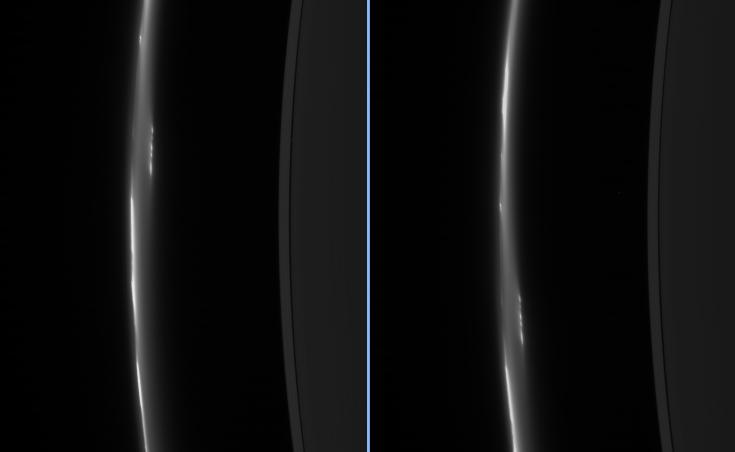
PIA08863 Image Credit: NASA/JPL/Space Science Institute Image Addition Date: 2007-01-26
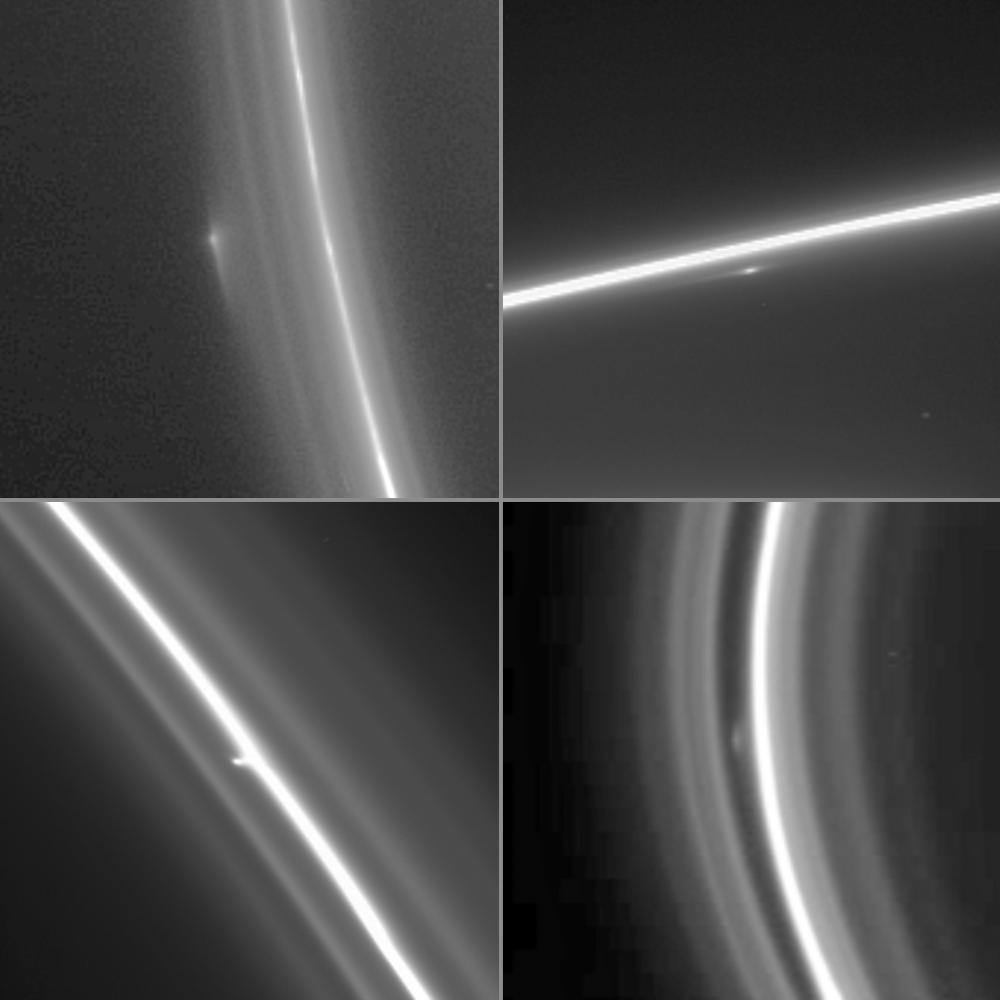
PIA07716 Image Credit: NASA/JPL/Space Science Institute Image Addition Date: 2005-09-05
土星の衛星プロメテウスの画像(PIA08397とPIA08947)は以下になります。
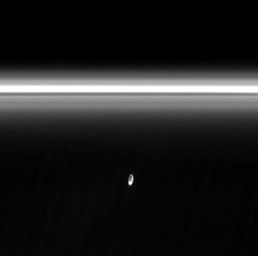
PIA08397
動画はこちら:http://photojournal.jpl.nasa.gov/archive/PIA08397.mpg

PIA08947 Image Credit: NASA/JPL/Space Science Institute Image Addition Date: 2007-05-24
